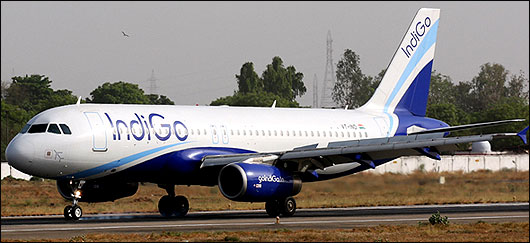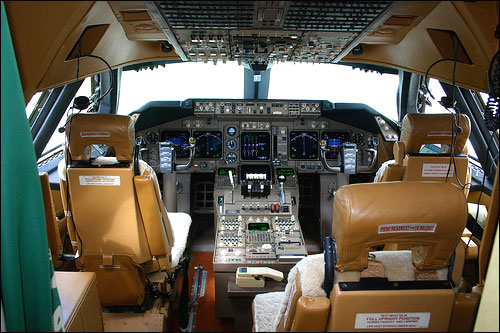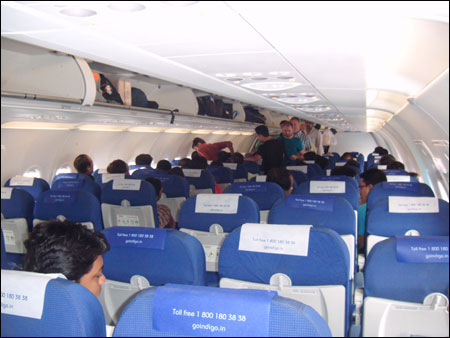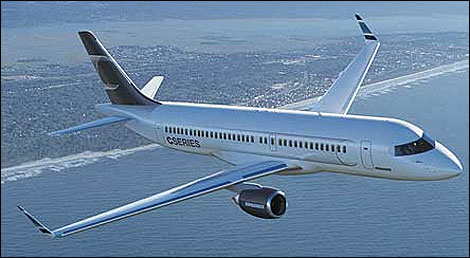 | « Back to article | Print this article |
How SpiceJet is caught in air pocket
SpiceJet CEO Neil Mills is upbeat about his airline. "We are in a comfortable zone. I am not worried about a decline in loads as long as revenue increases," he says.
But not many share Mills' enthusiasm. And there are enough reasons for that. After two consecutive years of profit, SpiceJet has been slipping on the financial front.
The airline ended FY 2010 and 2011 with net profit of Rs 61 crore (Rs 610 million) and Rs 101 crore (Rs 1.01 billion), respectively, but has posted losses in four consecutive quarters as higher operating costs wiped out revenue gains.
Analysts estimate the airline to end FY 2012 with annual loss in the range of Rs 300-400 crore (Rs 3 - 4 billion).Click on NEXT for more...
How SpiceJet is caught in air pocket
True, the aviation industry as a whole has been going through turbulent times.
But IndiGo, which along with SpiceJet, was considered to be the poster boys of India's low-cost airlines, posted 18 per cent growth in net profit in the year ended March 2011.
Profits jumped to Rs 650 crore (Rs 6.5 billion) from Rs 551 crore (Rs 5.51 billion) on the back of lower maintenance cost, lower interest charges and profits from sale and lease back of planes.
Click on NEXT for more...
How SpiceJet is caught in air pocket
So what has gone wrong with Spicejet? Owner Kalanithi Maran's recent decision to pump Rs 100 crore (Rs 1 billion) in the airline will give fillip to expansion plans and address auditor concerns of eroding net worth.
But that won't be enough to solve the airline's problems.
Analysts caution that a dip in loads, lower yields and reduced cost efficiencies could mar prospects of a quick turnaround.
Click on NEXT for more...
How SpiceJet is caught in air pocket
SpiceJet and rival IndiGo will be the only airlines to significantly add to their fleets this year.
Traditionally, low cost airlines stick to one aircraft type to keep costs minimal, but last September, Spicejet chose a different path inducting seven turbo prop Bombardier Q400 planes (in addition to existing Boeing 737 fleet) to serve tier II and III cities in central and South India.
The airline's network expanded to 34 destinations, traffic grew 29 per cent and revenue rose 41 per cent in the third quarter of FY 2012.Click on NEXT for more...
How SpiceJet is caught in air pocket
In the third quarter of 2012, the airline lost Rs 39 crore (Rs 390 million) on a revenue of Rs 1175 crore (Rs 11.75 billion) due to higher operating costs, depreciating rupee and below cost pricing. "SpiceJet's induction of Bombardier jets is quite intriguing.
No major low-cost carrier (LCC) - Southwest, RyanAir, EasyJet, AirAsia - operate fleets from two different aircraft families.
The complexities of duplicating various operational functions are normally quite challenging.
LCC cost efficiencies are derived from maintaining a simple aircraft fleet and a point-to-point route network," said management consultant and GoAir's ex commercial officer Raj Halve.
Click on NEXT for more...
How SpiceJet is caught in air pocket
The airline requires separate sets of pilots, engineers and spares for different types of aircraft and this pushed up the costs for Spicejet.
Employee costs grew 83 per cent to Rs 112 crore (Rs 1.12 billion) and interest spending rose 14 times to Rs 14 crore (Rs 140 million) in the third quarter of 2012.
John Kuruvilla, ex-chief revenue officer of Air Deccan states, "SpiceJet will be able to tap pent up travel demand in small cities but two fleet have its own issues and challenges. I expect their Bombardier fleet to bring in returns in 12-18 months."
"SpiceJet is in competition with Jet Airways on several regional routes but its yields are higher on routes where it has a monopoly," he added.
Click on NEXT for more...
How SpiceJet is caught in air pocket
There are other concerns too. On a year-on-year basis, SpiceJet's loads have been showing a steady decline in the last quarter.
Spicejet had lower loads in comparison to other rivals such as IndiGo and Jetlite. In January, SpiceJet had loads of 75.6 per cent while IndiGo and Jetlite had loads of 85.9 and 80.01 respectively.
"IndiGo seems to have pipped its peers (SpiceJet, GoAir) in building a stronger brand saliency around on-time performance ,as a result of its consistency in strategy and communication," said Himanshu Singh, managing director of travel portal Travelocity.
Click on NEXT for more...
How SpiceJet is caught in air pocket
IndiGo has a market share of 20.8 per cent, which is only second to Jet Airways as per the DGCA's January data. Spicejet has a market share of 16.3 per cent making it the fourth largest airline by passengers flown.
"Low cost airlines have been unable to hike fares and pass on costs not because of passenger opposition but because airlines are killing each other" an industry source observed.
Click on NEXT for more...
How SpiceJet is caught in air pocket
In their last week's research report titled "Will they break-even now" Bank of America-Merrill Lynch analysts Anand Kumar and S Arun observed that profits were not around the corner for domestic airlines.
"On the back of Kingfisher's capacity cuts, other carriers would see their load factors and yields improve in the near term.
However, we continue to remain negative on the sector on account of slowing traffic growth, strong capacity additions from low cost carriers and yield growth not sufficient to cover costs," they wrote in the report.
Click on NEXT for more...
How SpiceJet is caught in air pocket
Mills defend the decision on Bombardiers. "The Bombardier routes are doing fine. We started our regional operations last September and have 59 flights now. We hope to make net profit in Bombardier operations by September 2013," Mills says.
He suggests that the decision to choose a second aircraft type was more of a compulsion than choice. "I would love to fly Boeing 737s but in smaller airports there is no infrastructure. The runways are not long enough," he says, adding "Only pilots and engineers are different. Everything else is common."
Mills says SpiceJet was operating 270 flights. "We will continue to expand in regional as well as international routes," he says, adding the airline will induct 11 planes this year including eight Bombardier Q400s and three Boeing 737s.










